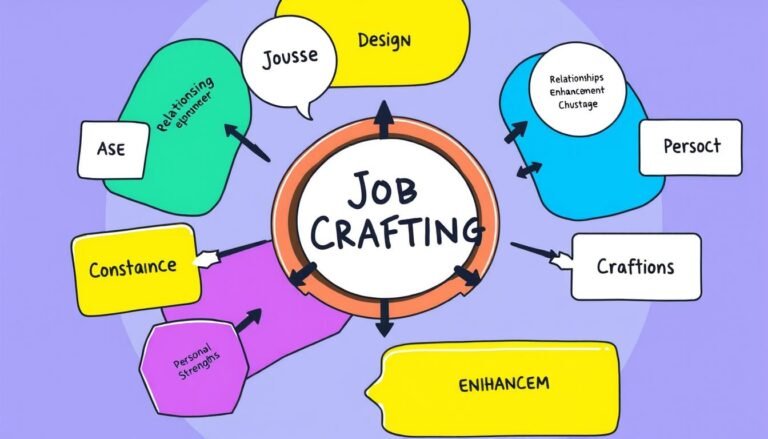Resolving Workplace Conflicts: 5 Psychological Approaches Every Leader Should Know
Ever wondered why some workplace conflicts get out of hand while others are solved easily? The answer lies in leadership skills and using psychological methods to solve conflicts. In today’s diverse workplaces, disagreements are common. But how leaders deal with these issues can greatly affect team spirit and work output.
Imagine a team meeting where two colleagues disagree on project priorities. As a leader, your response can either make things worse or better. Choosing the right approach can turn a tense situation into a chance for growth and new ideas.
Workplace conflicts are more than just awkward moments. They cost a lot. American businesses lose $359 billion each year because of unresolved conflicts. This huge loss shows how crucial it is to manage conflicts well.
But here’s something interesting: 53 percent of employees try to avoid “toxic” situations. This approach not only fails but also costs a lot. Ignoring a tough conversation can cost a company $7,500 and more than seven workdays. As a leader, you can’t let conflicts simmer without action.
In this article, we’ll look at five psychological methods every leader should know for solving workplace conflicts. These strategies will help you handle disagreements, create a positive work environment, and improve your team’s performance.
Key Takeaways
- Workplace conflicts cost American businesses $359 billion annually
- 53% of employees avoid toxic situations instead of addressing them
- Avoiding difficult conversations costs organizations time and money
- Effective conflict resolution requires proactive leadership
- Emotional intelligence is crucial in managing workplace disputes
- Understanding different psychological approaches can lead to better conflict outcomes
Understanding Workplace Conflicts: The Root Causes
Workplace discord is a big challenge for all kinds of organizations. Managers often spend a lot of time solving these problems. This can hurt productivity and overall performance.
Common Reasons for Workplace Discord
Many things can lead to conflicts at work:
- Conflicting needs for resources, recognition, or power
- Personality differences and contrasting work styles
- Misaligned goals between departments
- Communication breakdowns, including unclear messaging
- Differing personal values and unpredictable policies
The Impact of Unresolved Conflicts on Organizations
Ignoring workplace conflicts can harm organizations a lot:
- Decreased employee morale and productivity
- Increased absenteeism
- Potential for serious incidents or violent crimes
- Financial losses due to reduced efficiency
The Leader’s Role in Conflict Resolution
Leaders have a big role in solving conflicts. They must:
- Identify underlying issues causing discord
- Foster open communication among team members
- Maintain neutrality during mediation processes
- Address root causes for long-term organizational cohesion
By understanding these factors, leaders can manage workplace conflicts well. This helps create a better work environment.
The Importance of Addressing Workplace Conflicts
Workplace conflicts are common, with 85% of employees facing some kind of issue. It’s key to handle these to keep productivity up and relations positive. Ignoring them can cause missed deadlines, resentment, and failed projects.
Good conflict management boosts harmony at work. Research shows that when disputes are handled well, employees are 30% more engaged. This leads to better business results and happier clients.
The effects of not solving conflicts are big:
- Employees spend 2.8 hours weekly on disputes
- Unresolved issues cost businesses billions each year
- 85% of employees multitask due to unresolved issues, lowering productivity
Good strategies for settling disputes can make employees 50% more productive. Companies that focus on resolving conflicts see a 30% rise in morale and a 50% drop in issues.
| Aspect | Impact of Addressing Conflicts |
|---|---|
| Employee Engagement | 30% increase |
| Productivity | 50% improvement |
| Employee Morale | 30% boost |
| Conflict-Related Issues | 50% reduction |
Encouraging open talk and training in conflict management helps. It makes the workplace better and helps the company grow over time.
Conflict Resolution: A Key Leadership Skill
Leaders today must know how to solve conflicts. The Thomas-Kilmann model helps with this. It shows five ways to handle disagreements, based on the situation.
The Thomas-Kilmann Conflict Model
The Thomas-Kilmann model is a guide for conflict resolution. It uses a graph with two axes: assertiveness and cooperativeness. This helps leaders pick the best method for each situation.
Assertiveness vs. Cooperativeness
Assertiveness means focusing on your goals. Cooperativeness means thinking about others’ needs. Finding a balance between these is crucial for managing conflicts well.
| Approach | Assertiveness | Cooperativeness |
|---|---|---|
| Competing | High | Low |
| Collaborating | High | High |
| Compromising | Medium | Medium |
| Avoiding | Low | Low |
| Accommodating | Low | High |
Leaders need to improve their conflict resolution skills. By using the Thomas-Kilmann model, they can pick the right approach for each conflict. This makes the workplace better and more productive.
The Avoiding Approach: When to Step Back
Conflict avoidance is a style where you try to avoid problems. It’s seen as a lose-lose approach. Only 4.6% of professionals use this method, making it the least popular in work settings. Avoiding conflict might seem easy, but it often leads to bigger problems later on.
There are times when it’s smart to step back:
- When the issue is small
- When talking it out would make things worse
- When you need time to calm down
People who avoid conflicts often learned this from past experiences. Professional help and mediation can teach them better ways to solve problems.
| Pros of Avoiding | Cons of Avoiding |
|---|---|
| Saves energy | Issues remain unresolved |
| Buys time | Hidden tensions develop |
| De-escalates immediate tension | Covert power struggles emerge |
To become more collaborative, conflict coaching can help. Learning to resolve small disputes and practice compromise can improve your skills. Remember, talking things out and understanding others’ needs is crucial in preventing conflicts at work.
Competing: Taking a Stand in Conflict Resolution
Competing in conflict resolution means being assertive to gain control. It works well in some workplace disputes, but use it carefully. We’ll look at when it’s best and its possible downsides.
Scenarios Where Competing is Effective
Competing is useful in certain situations:
- Crisis management needing fast decisions
- Introducing unpopular but necessary changes
- Defending against those who exploit non-competitive behavior
- Scenarios where personal differences won’t change
Potential Risks of the Competing Approach
Competing can quickly solve workplace disputes, but it has risks:
- It can block effective communication
- May make conflicts worse
- Can lower morale and productivity if used too much
- May harm relationships and trust
The Thomas-Kilmann Conflict Mode Instrument (TKI) lists competing as one of five conflict styles. It’s assertive but uncooperative, with one side aiming for all the desired outcome.
| Conflict Style | Assertiveness | Cooperativeness | Outcome Distribution |
|---|---|---|---|
| Competing | High | Low | 100% – 0% |
| Accommodating | Low | High | 0% – 100% |
| Compromising | Medium | Medium | 50% – 50% |
To get better at resolving conflicts, leaders should mix competing with other methods. Being versatile can make crisis management and workplace dispute resolution more effective.
The Accommodating Style: Putting Others First
Conflict accommodation is a special way to keep the workplace peaceful. It means putting others’ needs before your own. This method is great for keeping everyone happy and working well together.
Leaders who choose this style often do it when keeping relationships strong is key. It works well when dealing with upset or angry people, as it can calm things down fast.
A study in Negotiation and Conflict Management Research showed that mixing styles can lead to better results. This means that being accommodating can be very helpful when used with more direct methods.
| Benefits of Accommodating Style | Potential Drawbacks |
|---|---|
| Builds goodwill | May stifle innovation |
| Quickly resolves conflicts | Can lead to resentment if overused |
| Improves relationships | Might encourage aggressive behavior in others |
While being accommodating is good, it’s crucial to use it wisely. Relying too much on it might stop healthy debates and new ideas. Leaders should aim for a balance. Encourage open talks when needed and use accommodation to keep things smooth.
“Accommodators have good relationship-building skills and are sensitive to others’ emotional states, body language, and verbal signals.”
Effective conflict solving means changing how you act based on the situation. By knowing when to use accommodation, leaders can make the workplace more peaceful. This helps in building strong relationships with employees.
Compromising: Finding Middle Ground in Workplace Disputes
Workplace compromise is key in solving conflicts. It means finding a middle ground where both sides give up something. This method works well when time is short or keeping relationships strong is important.
Benefits of the Compromising Approach
The compromising approach has many benefits:
- Faster conflict resolution
- Improved workplace relationships
- Increased satisfaction and commitment
- Fostering a culture of collaboration
Studies show that 76% of conflicts solved through compromise end in win-win situations. This shows how effective it is in finding solutions that benefit both sides.
When to Use Compromise in Conflict Resolution
It’s important to know when to use compromise. It’s best in situations where:
- Parties have equal power and influence
- The conflict is not highly emotional
- There are impending deadlines
- Maintaining positive relationships is crucial
- Future collaboration is necessary
A study found that 85% of workplace conflicts need compromise. This shows how vital it is to know how to compromise well. By understanding its benefits and when to use it, leaders can handle disputes better. This leads to a more harmonious and productive work environment.
Collaboration: The Win-Win Strategy in Conflict Management
Collaborative problem-solving is a strong way to solve conflicts. It aims to find solutions that benefit everyone, leading to a better work environment. With 29 years of leadership and over 1,000 trained managers, we’ve seen how it can turn disputes into chances for growth.
Managers spend about 25% of their time on conflicts. Using a collaborative style, they can make this time useful for solving problems. This method encourages teams to work together, addressing all concerns and finding solutions that work for everyone.
Collaborative conflict resolution brings many benefits:
- Lasting resolutions that prevent issues from resurfacing
- Increased innovation and creativity
- Stronger workplace relationships
- Improved communication skills
- Enhanced problem-solving abilities
Creating a culture of collaboration can boost productivity and efficiency. It reduces defensiveness and blame, making the work environment positive. Team members feel heard and valued.
“Collaboration is the fuel that allows common people to attain uncommon results.”
Collaborative problem-solving might take more time at first. But, it usually leads to the best results in the long run. By choosing this path, leaders can make conflicts stepping stones to understanding and innovation. This leads to true harmony in the workplace.
Implementing Effective Conflict Resolution Strategies
Keeping a workplace harmonious is key. Leaders need to know how to handle conflicts well. They must understand each situation to find the best solution.
Assessing the Situation
First, look at the context of the conflict. Know who’s involved, why it started, and how it might affect the team. People often think they’re right because they see things differently. This helps leaders be fair and understanding.
Choosing the Right Approach
After understanding the situation, pick the best way to solve it. Remember, some issues are harder to agree on than others. In teams that work remotely, clear communication is even more important. Encourage empathy and finding common ground to bring people together.
Following Through and Evaluating Outcomes
After trying a solution, watch how it works out. Checking the results is important for lasting peace. In remote teams, unresolved issues can hurt productivity and morale. Regular talks and open discussions can keep things positive. Leaders who know how to handle conflicts well can build strong, united teams, no matter where they work.
Source Links
- 5 Strategies for Conflict Resolution in the Workplace
- Five Conflict-Resolution Strategies for the Workplace
- The Psychology of Conflict Resolution and Mediation
- HR024/HR024: Understanding Conflict in the Workplace
- How to Identify the Root Causes of Workplace Conflicts
- North Central College
- Why Conflict Resolution Is Important for Your Business
- The Importance of Conflict Management and How to Implement It
- Managing Conflict: A Key Leadership Skill
- 7 Successful Conflict Management Skills Every Leader Needs to Know
- Using the Avoiding Conflict Resolution style — MV Mediation Program
- Avoiding Conflict Management Style: Pros, Cons, Examples
- Avoiding Conflict Resolution Style: Everything You Need to Know | AllWin Conflict Resolution Training
- Using the Competing Conflict Resolution style — MV Mediation Program
- Competing, Accommodating, and Compromising in Conflict Resolution
- Conflict-Management Styles: Pitfalls and Best Practices
- Design and Conflict: Do You Know Your Conflict Style?
- Conflict Styles and Bargaining Styles
- The Essential Role of Compromise in Conflict Resolution | Everyday Speech
- How can you use compromise to resolve conflicts?
- 7 Effective Conflict Resolution Techniques In The Workplace | Wellable
- How to Create a Win-Win Situation in Business Conflict | CMOE
- Microsoft Word – 5 Types of Conflict Styles.docx
- Collaborating Conflict Resolution Style: Everything You Need to Know | AllWin Conflict Resolution Training
- 5 Conflict Resolution Strategies
- Virtual Team Conflict Resolution Strategies & Tips







